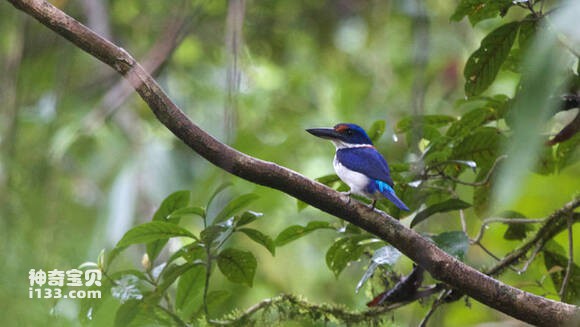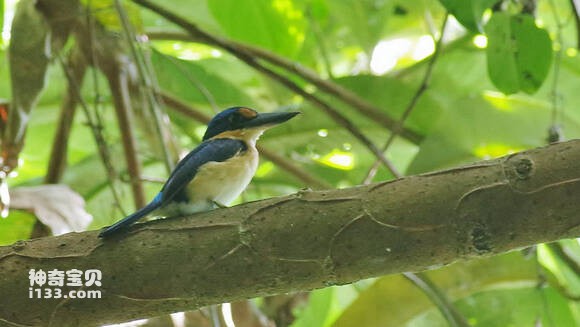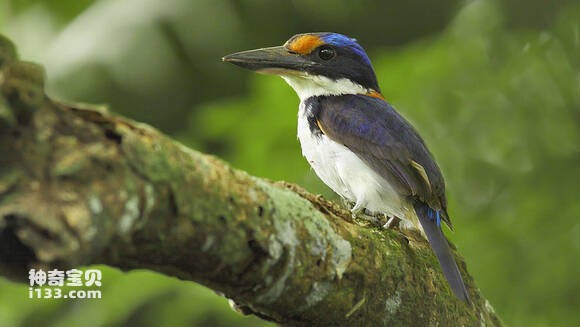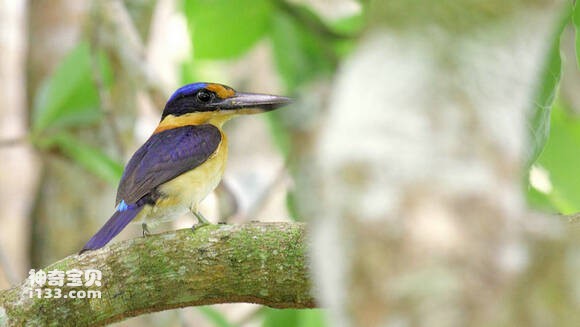Todirhamphus winchelli
IUCN
LCBasic Information
Scientific classification
- name:Todirhamphus winchelli
- Scientific Name:Todirhamphus winchelli,Halcyon winchelli,Rufous-lored Kingfisher,Winchell's Kingfisher
- Outline:Climbing birds
- Family:
Vital signs
- length:About 25 cm
- Weight:60-80g
- lifetime:No textual research information is available
Feature
There are large reddish-brown spots in front of the eyes, so it is also called red-brown spot jade
Distribution and Habitat
Philippine jadeite is found in the Pacific Islands (including Taiwan Province of China, Dongsha Islands, Xisha Islands, Zhongsha Islands, Nansha Islands and the Philippines, Brunei, Malaysia, Singapore, Indonesia's Sumatra, Java Island and Papua New Guinea).
Philippine jadeite has been recorded in some islands as high as 1,000 meters above sea level. It is usually found in dense forests and near the shore near water.
Appearance
The Philippine emerald is 25 cm long and weighs 60-64 grams for males and 67-80 grams for females. It has large reddish-brown spots in front of its eyes, so it is also called reddish-brown emerald. The body has dazzling plumage, is slightly black and iridescent blue luster, especially on the head and rump above the glow is particularly bright. The female has a yellowish-orange forehead and the male has a white belly. The juveniles are darker than the adults, and their breasts and collars are orange. There are five subspecies of Philippine emerald, each of which differs in the intensity of the blue on the upper body and the color of the female's abdomen.
The mouth is thick and long like a chisel, the base is wider, the mouth peak is straight, the peak ridge is round, there is no nasal groove on both sides; Wing circle, the first primary feather is equal or slightly shorter than the seventh primary feather, and the second, third, and fourth are nearly equal in length; Primary fea
Details
Philippine jade scientific names Todirhamphus winchelli, Halcyon winchelli, foreign names Rufous-lored Kingfisher, Winchell's Kingfisher, There are 5 subspecies (1.Todirhamphus winchelli nesydrionetes) distributed in the Philippine Pagoda. 2.Todirhamphus winchelli nigrorum is found in Samar, Bileland, Leyte, Negros, Cebu, Siquijor and Poho. 3.Todirhamphus winchelli mindanensis is found in Mindanao. 4.Todirhamphus winchelli winchelli is found on Basilan Island. 5.Todirhamphus winchelli alfredi is found in the Sulu Islands (Bangao, Sayasaya, Tawetawi, Jolo).

Philippine jade is usually eaten alone or in pairs. Like most forest kingfishers, they are completely carnivorous. Often searching for prey in leaves or dirt. The main diet is invertebrates such as crickets, spiders, scorpions, and snails. It also eats small vertebrates such as small fish, small snakes and lizards.

Each year in April and May is the breeding season of the Philippine emerald, the chicks leave the nest between April and August, nest on the earth cliff or on the embankment of the river, and dig a tunnel type cave with the mouth for the nest, 60 cm deep, 20 cm wide, 10 cm high and long, oval. These caves are generally bare of bedding. The eggs are laid directly on the nest ground. Some also drill holes in tree trunks for nests. Oval, pure white, about 29.4×26.2 mm in size.

Listed in the International Union for Conservation of Nature (IUCN) ver 3.1:2008 Red List of Birds。

Protect wild animals and eliminate wild meat.
Maintaining ecological balance is everyone's responsibility!








